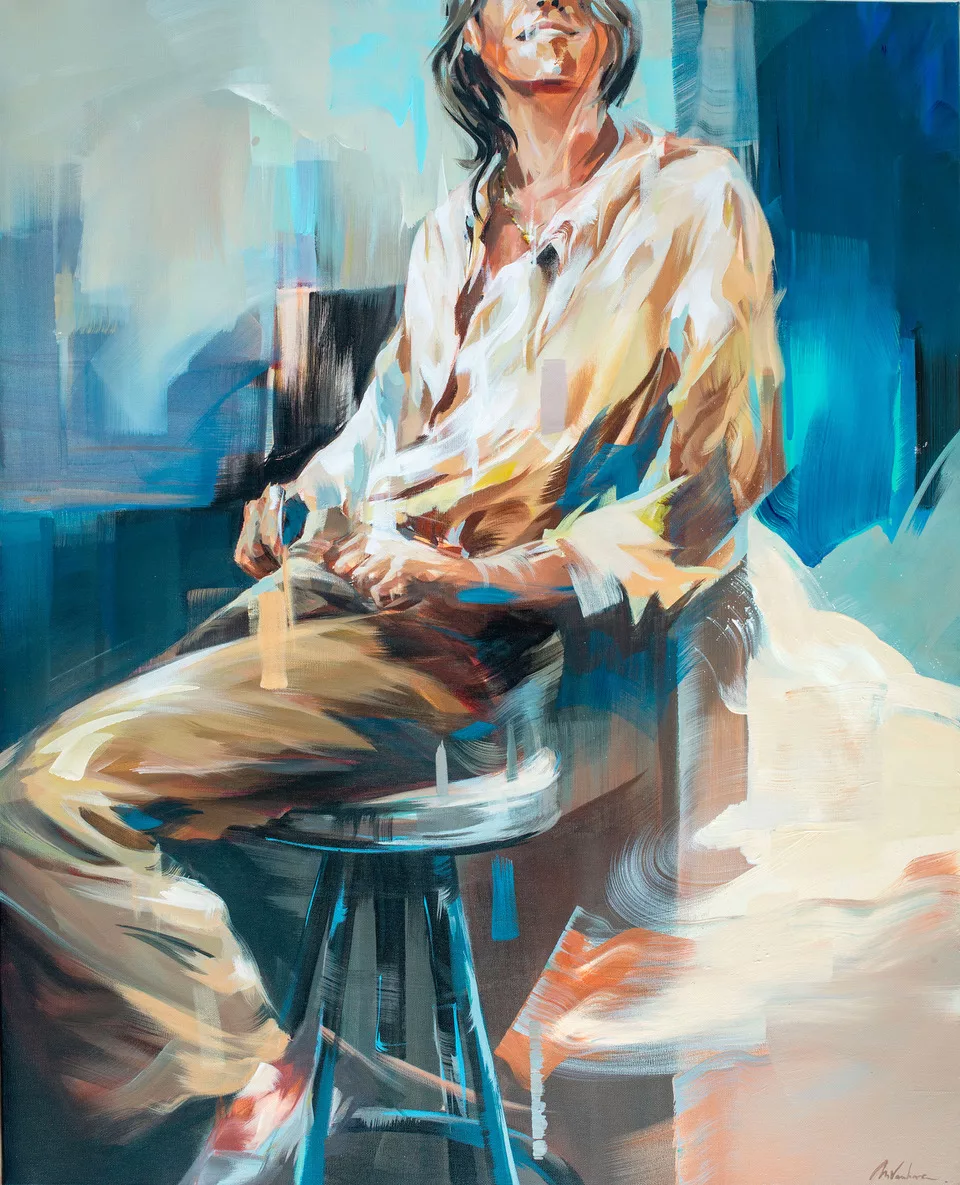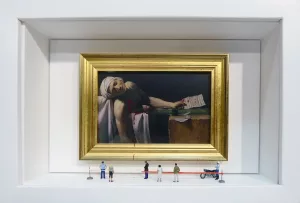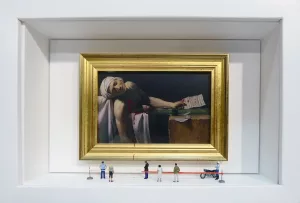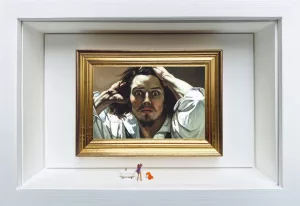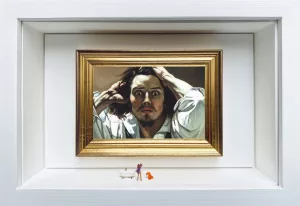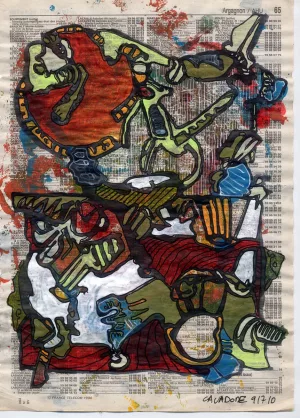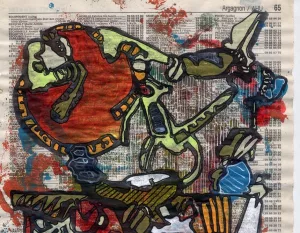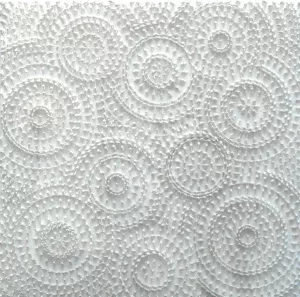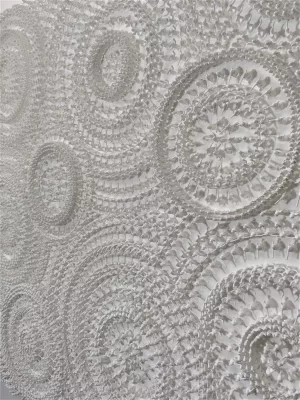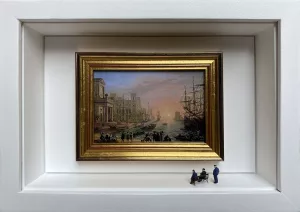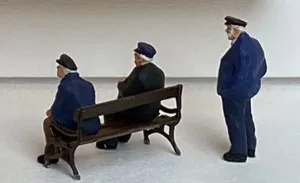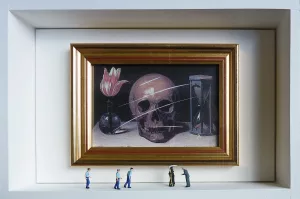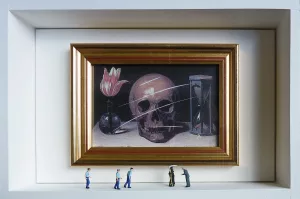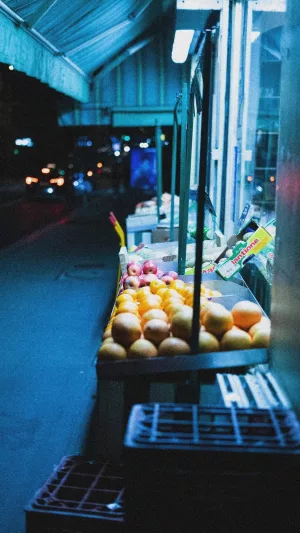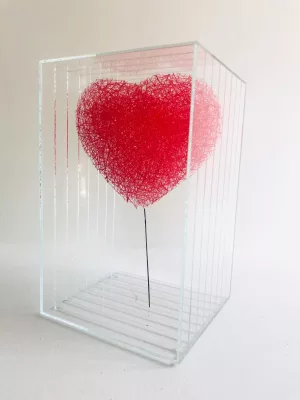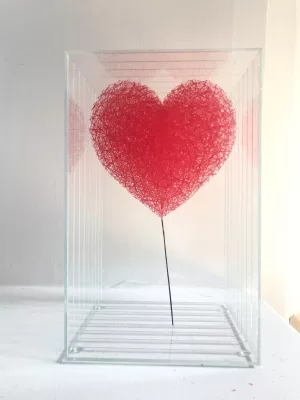The little heart
Murielle Vanhove
Acrylic on canvas
100cm x 80cm x 2cm
Unique piece
3000,00€
Delivery
The delivery time for this work is 7 to 10 days.
Good to know
We are at your disposal to answer any questions you may have about this work. you may have about this work. Do not hesitate to contact us by clicking here.
About the artist
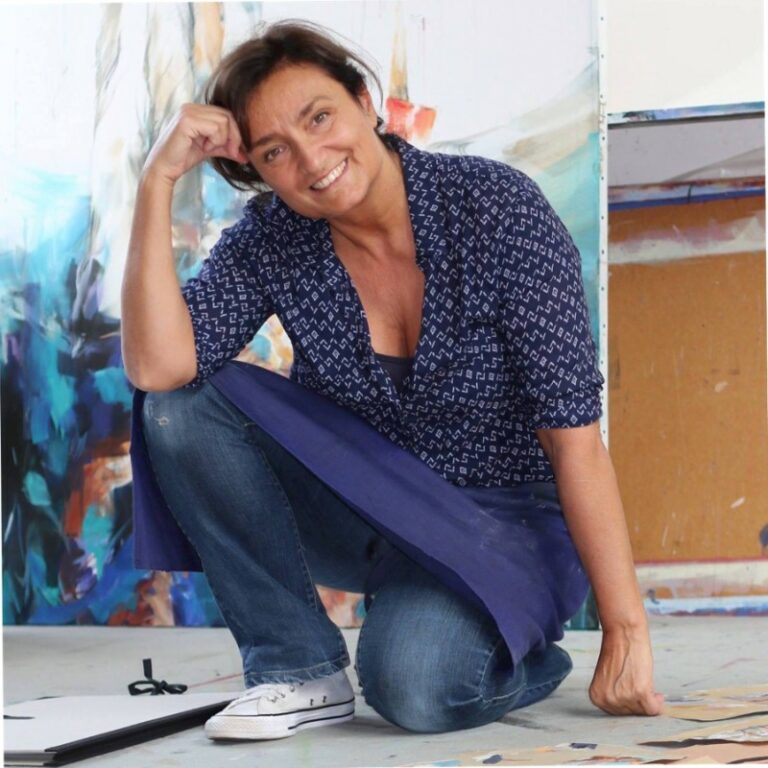
Murielle Vanhove
Murielle Vanhove captures the fleeting but familiar moment of our accelerated lives. First there is the gesture, fast and frank, always in search of movement. Then comes the time of the glance. Guided by the light, the eye settles on the canvas to the vibrant rhythm of the touch, the motif and the color. A moving, fluid and vital representation of bodies, stopped in a familiar moment of daily life, comes to seize in the timelessness the snippets of a story that everyone can recognize or enjoy interpreting through a kind of pictorial reportage of our society.
Born in Paris in 1963, Murielle Vanhove has always been fascinated by the dynamics of cities and urban travelling. As a teenager, she already observed people coming and going in her parents' Parisian brasserie. Hiding behind her sketchbooks, she sketches this energy of the rush, where a crowd of anonymous people jostle and cross paths. Having received a complete education in painting, drawing and photography at the ESAG Penninghen, she validated in 1987 a master's degree in Artistic Direction which led her first to work in advertising agencies. However, the need to reconnect with the gesture and the material was soon felt. After ten years of graphic creation, she decided to abandon the screen in favor of the brush. Her portraits and scenes of city life are now collected in Paris, New York, London, Brussels, Basel and Hong Kong.
Murielle Vanhove's faceless characters : the coded reflection of our society
Murielle Vanhove's faceless characters : the coded reflection of our society Corresponding to the recurrent profiles that the artist meets at random in a street or at the bend of a café, these silhouettes are also the rather cynical reflection of a standardized society where appearance and the dictates of fashion prevail. Representing characters always "beautiful", his paintings voluntarily refer us to the media canons of television, advertising or glossy magazines. The artist explains: "as the Rouarts or Norman Rockwell did before me, I try to question my time by deciphering dress and social codes in my painting. As a witness of her time, Murielle Vanhove also questions the identity and history of her characters. Animated by the lively touch of her painting, they evolve in scenes of ordinary life. Sometimes moving out of focus, they appear, disappear, enter and leave the canvas as on the boards of a theater. But, unlike the actors in a play, their roles are not defined. Deprived of faces, they impose themselves on the spectator in anonymity and have for only distinctive signs that their steps, attitudes or clothes. Their profiles thus seem familiar to us but are also left entirely free of interpretation. As the artist confides: "I work on identity and yet all my characters are deprived of it. Of a person, I will want to reveal the attitude more than the face. By focusing on their bodies in movement, I show moments, hint at personalities and keep a great deal of mystery so that the viewer can invent his or her own stories from what is shown.
Painting and gesture: deconstruction of movement, figuration of the moment
Beyond figuration, it is above all the unstructured representation of movement that interests the artist. Fascinated by the lights of Sorolla, the colors of Bonnard, the pictorial accuracy of Lucian Freud or by what John Seed calls "Discombobulation painting", Murielle Vahnove manages to freeze on the limited and flat surface of the canvas what is instantaneous. By the gesture and the treatment of the matter, she decomposes time and rests with force all the fluidity of a moment. Everything begins with the construction of a motif that she deconstructs by blurring the line, breaking the contours and linking the tones. Distrusting the brush, which would encourage her to draw too much, she prefers the brush and working by zones. Moving her colors around to better represent the light, she favors the mixture of transparent pigments and applies her touches by superimposed glazes. At the very end comes the gesture, the "adrenaline touch": splashes, projections or trails give the last movement, the one that directs the eye to the surface of the canvas. Liking to paint in urgency and spontaneity, she found in acrylics a medium allowing her to free her writing and to approach what she qualifies as "a moment of danger, when the hand takes over and guides the brush". However, if the gesture is fast, each work requires hours of work. The artist specifies: "My painting is fast but I return to it very often. I paint, I stop, I come back. I take some distance, retouch the painting and repeat the process until I am fully satisfied with each touch. From the act of painting remains the dynamics of the colors, the contrast of the empty and the full and the avowed revelation of the gesture, vibrant and decisive. Giving his painting a particular energy that recalls Impressionism, these indecisive marks of the timeless participate as much in suggesting the tumult and agitation as in figuring the instant in space and time. One can thus also see in his destructured figuration the imprint of a futurist apprehension of the movement, expressed in these terms in the Manifesto of the Futurist Painters: "...All moves, all runs, all transforms quickly. A profile is never immobile in front of us, but it appears and disappears unceasingly. Given the persistence of the image in the retina, the objects in movement are multiplied, deformed while continuing, like precipitated vibrations, in the space which they traverse".
Travelling and narrative construction: from the painting to the frieze
There is finally in the work of Murielle Vanhove a subtle narrative and cinematographic dimension. The composition of her portraits or scenes of city life are often inspired by photographs that she is used to taking in the street. The artist turns her paintings into limitless narrative spaces that imply an idea of visual travelling. Seizing the movement by a "sequential figuration" that the spectator is led to reconstitute by himself, each work questions the glance and the reading of the image. Through original games of viewpoints and off-camera framing, the artist also questions the limit of pictorial space to extend it beyond the canvas and arouse in the viewer a feeling of focal immersion in the continuous coming and going of the painting. Most of Murielle Vahnove's paintings are designed to be arranged in diptychs or triptychs in the form of friezes. Creating panoramas that the eye could only grasp through the wide-angle lens of a camera, these friezes amplify the effects of visual travelling, of immersion and of scenic openness. Finally, the artist is interested in the game of narrative construction, and some of her friezes are entirely modular - the idea being, according to her, that: "even once finished, certain paintings continue to move. The one who owns them can also be an actor of creation by deciding, by such or such hanging, of their evolving form". The works that make up these friezes are sufficient in themselves to function separately, but they can also be combined according to the desires of each person to create new stories according to the arrangement made. From two portraits can be created a great scene of coffee. From a crowd of passers-by can be read and extracted the discreet meeting of two strangers. All narrations are possible and left to the choice of the spectator who, if he wants, can also become a narrator.

